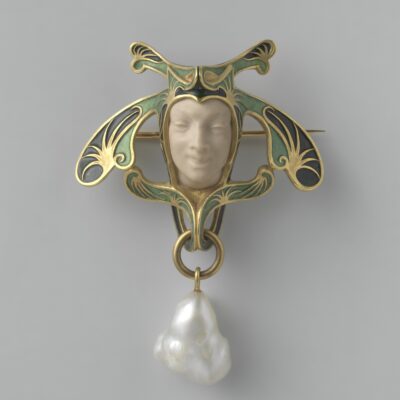
EFHA World 25.07.2022
11.12.2023
cultural heritagedigital fashiondigital technologiesEFHA2023fashion conferencepreservation
a recap of the EFHA 2023 conference held in Utrecht – and link to the all the videos on EFHA’s Vimeo chenille
Hosted by Centraal Museum in the heart of Utrecht, the ‘Future Heritage’ EFHA conference held in November 2023 brought together experts, professionals, enthusiasts, and visionaries from across the globe to delve into the evolving landscapes of heritage preservation and display, to reflect together on what to expect from the future – and how to direct it where the community wants it to go.
One of the central themes of the conference was the integration of technology and digital advancements into the preservation and promotion of cultural heritage. Attendees engaged in thought-provoking discussions on the use of virtual reality, augmented reality, and artificial intelligence to enhance our understanding and experience of historical artifacts and sites. From interactive exhibits to immersive virtual tours, participants explored innovative ways to bridge the gap between the past and the present.
The first day’s panel Research, Collect, Connect: Imagining the Future of Fashion Heritage chaired by Adelheid Rasche and Gabriele Monti, showcased a vibrant blend of historical reverence and forward-thinking discourse. The session was kicked off by Federica Vacca from Politecnico di Milano, who explained the work carried out by the Gianfranco Ferré Center, housed in the university in Milan, in relation to the use of digital technologies to develop the study of the Italian architect/couturier and his legacy. Sabine De Guenther from Fachhochschule Potsdam followed, delving into the project ‘Restaging Fashion’ which proposes a visualisation prototype for vestimentary sources: a precious tool, and an example of how digital technologies can speed up the process and open new possibilities in research methodologies. Elisa Palomino from Smithsonian NMNH and Jonathan Katz presented their 3D simulation of a Fish skin parka from the Anchorage Museum: a project using technologies and digital tools to retrace the links of Arctic Material Culture Heritage and take them into the present of fashion illustration and design. Martina Ponzoni and Daniele Scarante from d_archive introduced their company: an innovative platform focusing on preserving fashion heritage with digital technologies, with the aim to make it accessible to everyone, everywhere.
Right after a short break, Kate Irvin from RISD Museum, and Joy Ko from RISD Virtual Textiles Research Group took us to the other side of the Atlantic to introduce the work they are doing in Rhode Island to reflect and reproduce Virtual Textiles, understood as objects with a new materiality and as sites of sensory experiences that can be felt and communicated in different ways. Closing the first day was Debra Knoop, who explained the impressive work that ModeMuze is doing, connecting artists and digital creators with curators and conservators to display digital museum collections part of their network.
The tone of the second day was set by Roger Gerards from AMFI. His brilliant contribution demonstrated how the Amsterdam Fashion Institute is at the forefront of connecting traditional craft with digital techniques and tools, leading the way towards a phygital fashion education, that can prepare students to work in a competitive, hybrid system.
Panel two, Exhibit, Represent, Transform: New Experiences for New Spaces, chaired by Karolien de Clippel, focussed on a series of case studies mapping out projects and exhibitions with digital innovation for fashion heritage at their core: 5DCulture, which sees EFHA as partner, presented by Marta Franceschini, Studio PMS and the exhibition From Pattern to Polygon, introduced by Suzanne Mulder, Studio PMS and Centraal Museum; the digital exhibition on Fashion and Textiles in the Life and Work of the Artist Steven Campbell, by Mairi MacKenzie from The Glasgow School of Art; the exhibition on Bally’s history and archive on Google Arts & Culture, by Charlotte Stachel, from USI – Università della Svizzera italiana; and finally the presentation of the AR/VR implemented in the Missoni archive, by Luca Missoni. Moreover, with a more theoretical presentation, Isabelle D’Arcy from London College of Fashion led us to speculation on the potential future of fashion heritage and exhibitions.
Beyond the presentations and panel discussions, the conference facilitated meaningful networking opportunities. Professionals from various fields, including fashion history and theory, conservation, technology, and education, had the chance to collaborate on potential projects that could shape the future of heritage preservation and display.
We were also allowed behind the scenes of the new permanent display of Centraal Museum, guided by artistic director Bart Rutten, to see how traditional modes of exhibiting artefacts and digital technologies can be used in tandem to provide a better experience to the audience.
Technical issues aside – there were a few, testifying the difficulties in liaising digital tools and physical experiences, but we managed anyway! – ‘Future Heritage’ was a dynamic and inspiring gathering that showcased the new directions institutions and companies are taking in the realm of cultural heritage. As we move forward, armed with the knowledge and insights shared at the conference, the global community stands better equipped to navigate the challenges and opportunities that lie ahead in an ever-evolving landscape. The seeds planted in Utrecht in November 2023 are sure to blossom into a future where our rich cultural tapestry is not only preserved but celebrated and shared with generations to come.
Now all the videos of the presentations can be accessed on EFHA’s Vimeo channel.